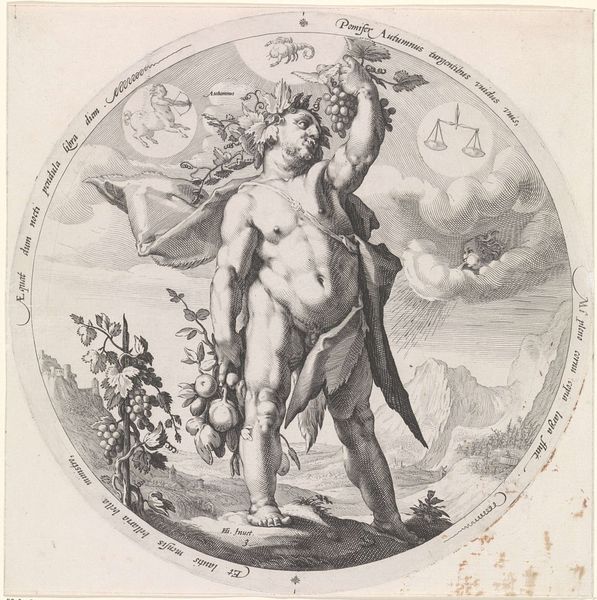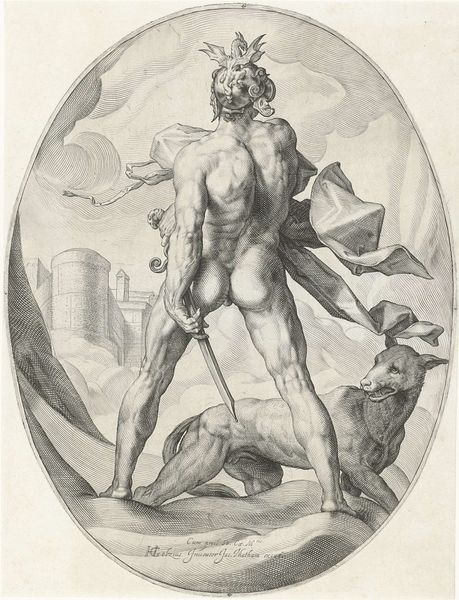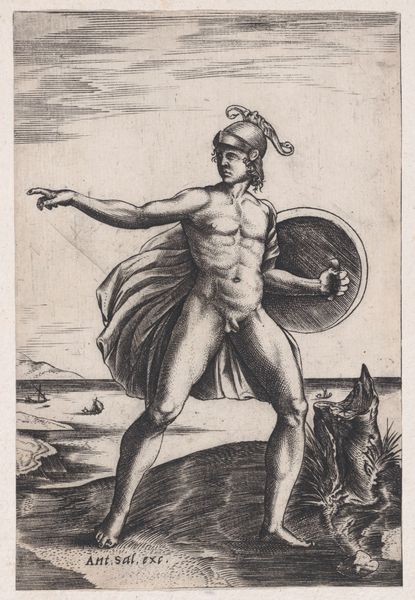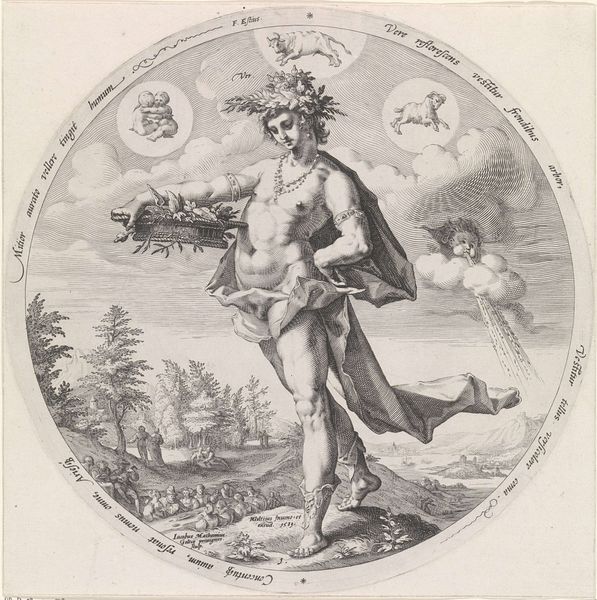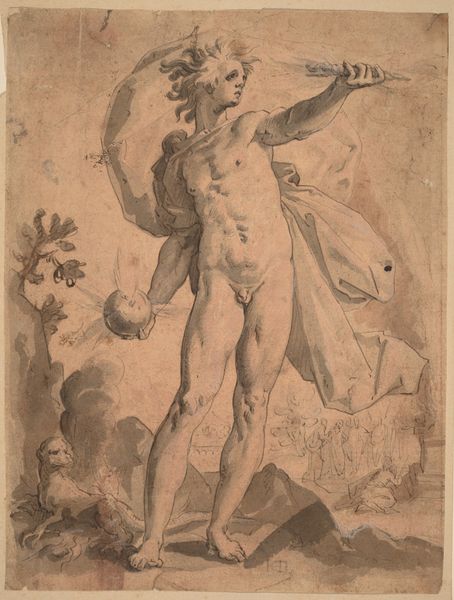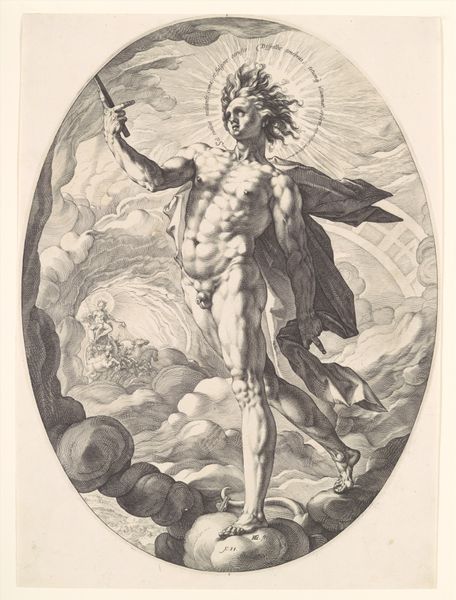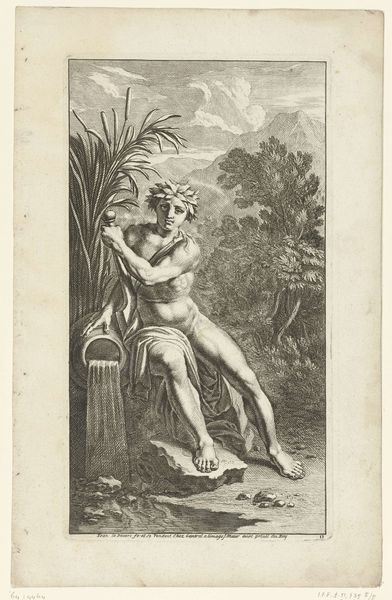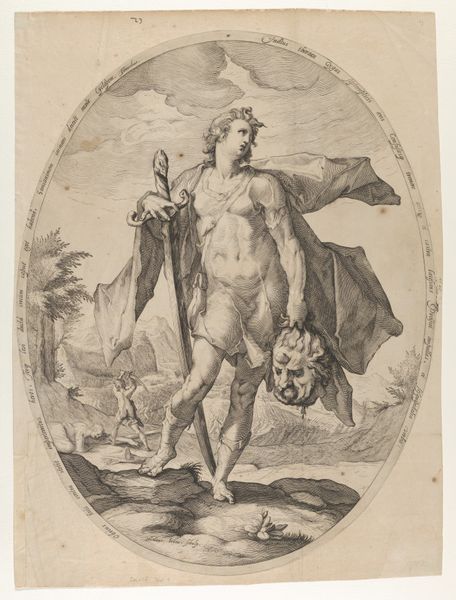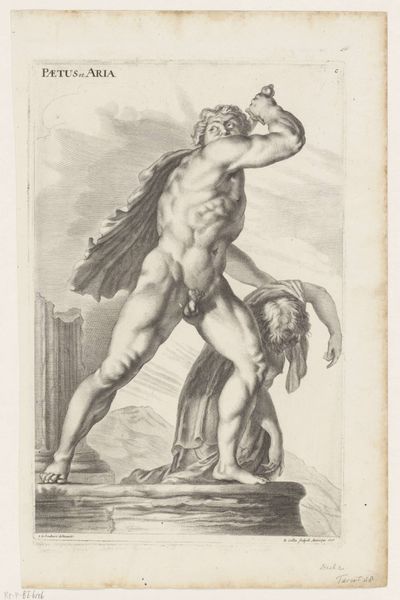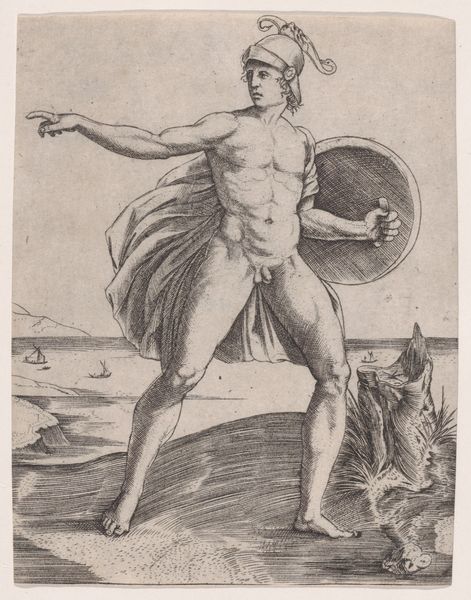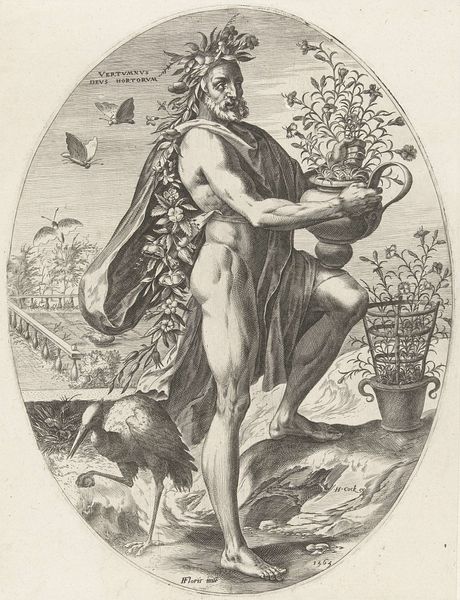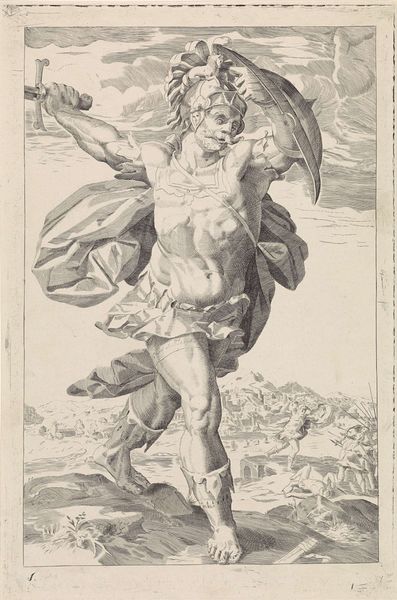
Copyright: Rijks Museum: Open Domain
Jacob Matham crafted this engraving, titled "Summer," portraying the season as a robust, nude male figure adorned with wheat. This figure symbolizes fertility and the bounty of the harvest, reflecting summer’s role as a time of maturation and abundance. The motif of a figure entwined with foliage and crops is ancient. We see echoes of this in depictions of Dionysus or Bacchus, gods of wine and fertility. The wreath of wheat, like the ivy wreaths of Dionysus, carries a collective memory of earthly abundance. It represents not just sustenance but also a deeper, almost subconscious, connection to the natural world. Consider how such symbols engage us on an emotional level. The ripe wheat evokes a sense of fulfillment, while the figure's nudity speaks to uninhibited vitality. This primal imagery, deeply ingrained in our cultural psyche, resonates with the cyclical nature of life, death, and rebirth. The symbolism in "Summer" reminds us that images are never static; they transform, adapt, and resurface across time, carrying echoes of the past into the present.
Comments
No comments
Be the first to comment and join the conversation on the ultimate creative platform.

